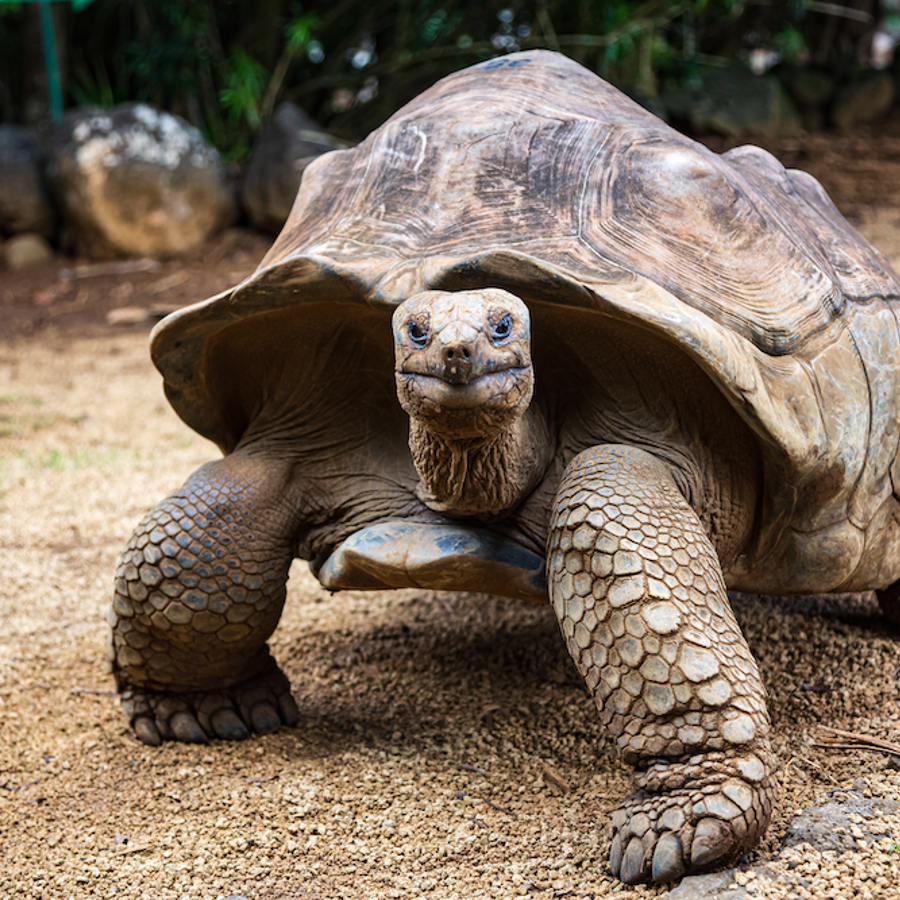
What long-life DNA do a tortoise, whale, and sequoia share?
April 12, 2024

- Related Topics:
- Evolution,
- Comparing species,
- Aging,
- Cancer,
- Quirky questions
A curious adult from the UK asks:
"What dna has sequoia tree, a Bowhead whale and a giant tortoise have in common as they all live for a long time, could that dna that is missing in humans be added to humans to live longer and slow human metabolism?"
A sequoia tree, a bowhead whale, and a giant tortoise don’t actually share the same ‘long-living DNA.’ It is true that they are all incredibly long-lived organisms, but they achieved this through different means!
DNA exists in every living organism. It is like an instruction manual for how an organism will grow and live. This instruction manual, however, is prone to random changes (mutations).
Organisms with beneficial mutations will survive better and give more offspring that carry the same mutations. Over time these mutations will accumulate, which is how different species evolve.
We can think of this process as traveling.
Imagine two travelers walking down the same path, but every now and then one traveler will take a random turn. Even though the two travelers can take different paths, sometimes they might end up at similar places—one person might end up at Peet’s and the other at Starbucks, but they will both have coffee!
One example of this in nature is flying. Birds, bats, and butterflies all have wings for flying, but they evolved their wings independently through different DNA mutations. This is called convergent evolution.

Many roads lead to ‘Rome’
Our three main characters, sequoia tree, bowhead whale, and giant tortoise, also made their way close to the same endpoint—longevity, through different paths.
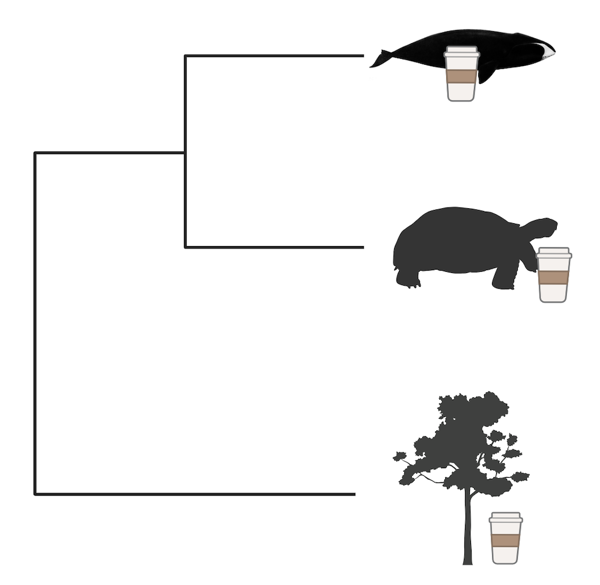
The sequoia tree belongs to the kingdom of plants, which split apart from all animals about 1.5 billion years ago. Plants live very different lives from us and face different challenges when it comes to longevity.
To us, things like cancer, heart diseases, and Alzheimer’s are the main culprit that keeps us from living longer. But plants don’t have those challenges. Instead, they face threats from wildfire, insects, and fungi.
The sequoia tree carries unique DNA that gives them resistance to pathogens1. These genes produce a high amount of a chemical called tannin, which acts like a bandage that accelerates wound healing and deters harmful insects. They also have strong barks that help them withstand wildfires.
What about the bowhead whale and the giant tortoise? They live in the water so they don’t need to worry about wildfires. And they are not as concerned about constant attacks from insects. These species needed to solve different problems in order to live a long life.
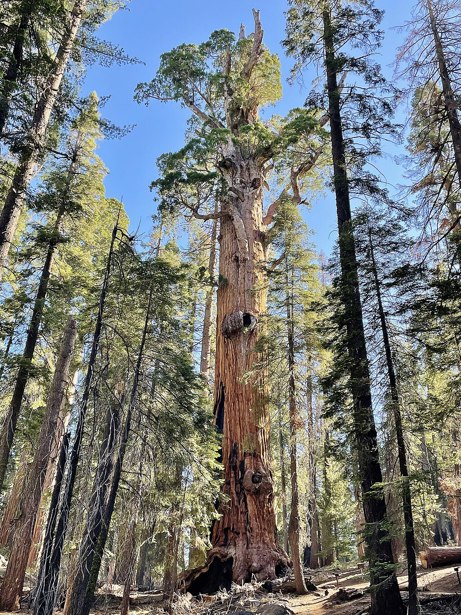
Living life cancer-free
The bowhead whale and giant tortoise don’t share long-life DNA with a sequoia. But these two species do indeed have some similarities in their DNA that help them achieve a long life.
Cancer is one of the leading causes of death among the aging populations, not just for us but for other animals as well. The giant tortoise and bowhead whale both have some genetic changes that make them less susceptible to this disease.
Cancer arises from errors in DNA that makes the cells grow abnormally. These errors can happen any time DNA gets copied, accumulating as an organism ages. Most organisms have ‘proofreaders’ in their cells that can spot and correct errors in DNA. But sometimes mistakes could still happen.
Scientists have found that organisms like the bowhead whale and the giant tortoise have better DNA proofreading. The bowhead whale carries genetic changes that give it more efficient proofreaders2. The giant tortoise has genetic changes that give it extra numbers of proofreaders3.
So while they both have better DNA proofreading, they achieve that in different ways. With fewer mistakes in their DNA, the bowhead whale and the giant tortoise are able to maintain healthy cells and live long and almost cancer-free lives!
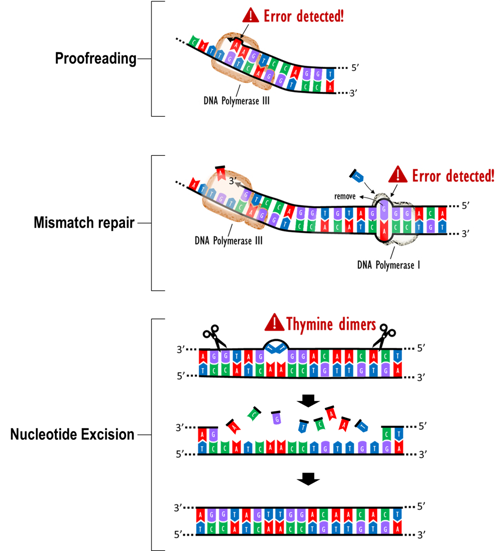
Better DNA proofreading and repair is just one of the mechanisms that bowhead whales and giant tortoises use to promote longevity. They also have strategies unique to their own species.
The giant tortoise, for example, has more genes that boost their immune cell activities3. The bowhead whale has differences in their thermoregulation genes, which might help them withstand the cold environment in the ocean2.
After all, although the sequoia tree, the bowhead whale, and the giant tortoise don’t share the same DNA for longevity, there is so much more we can learn from them about the secret to a long and healthy life.
Maybe in the near future we will be able to make anti-aging drugs based on what we’ve learned from these species!
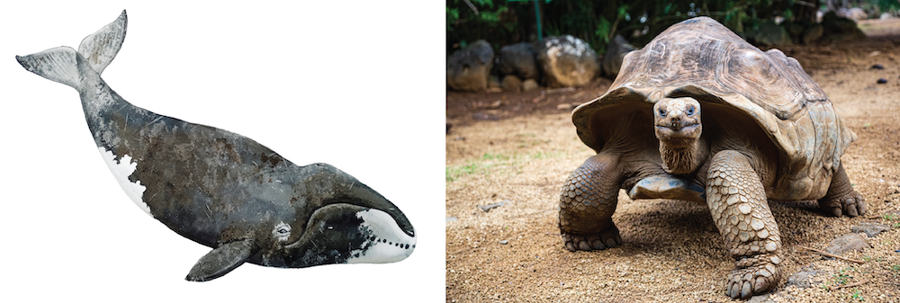

Author: Lucy Zhang
When this answer was published in 2024, Lucy was a Ph.D. candidate in the Department of Genetics, studying the roles of immune cells during heart development and congenital heart disease. She wrote this answer while participating in the Stanford at The Tech program.
 Skip Navigation
Skip Navigation
